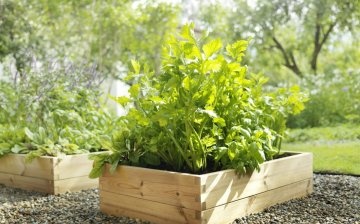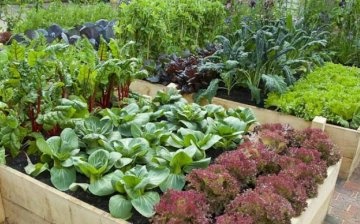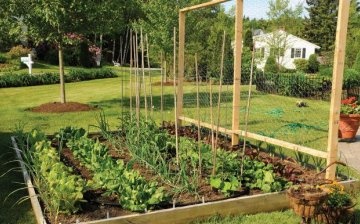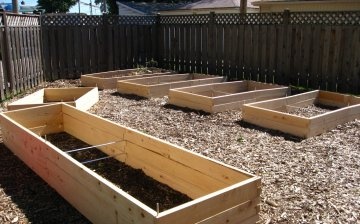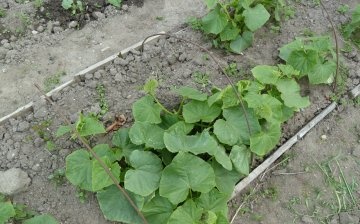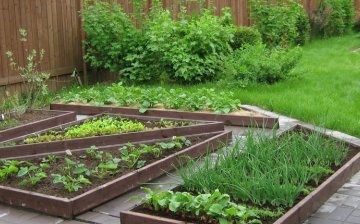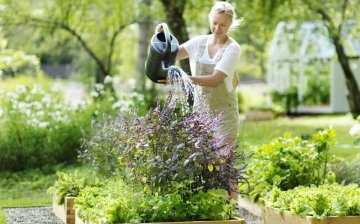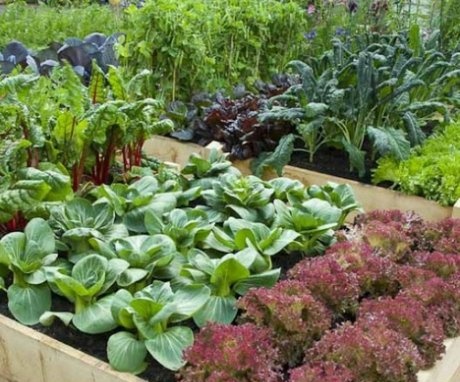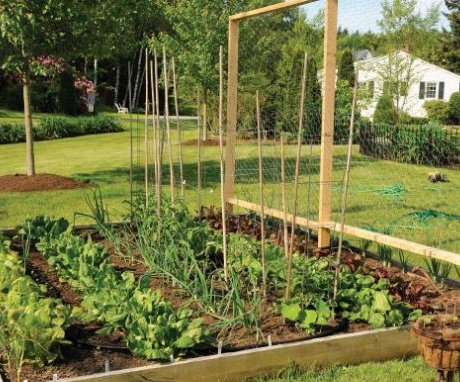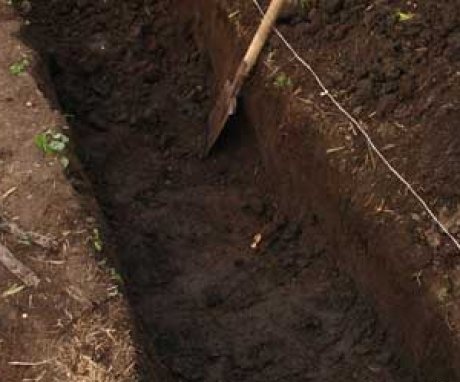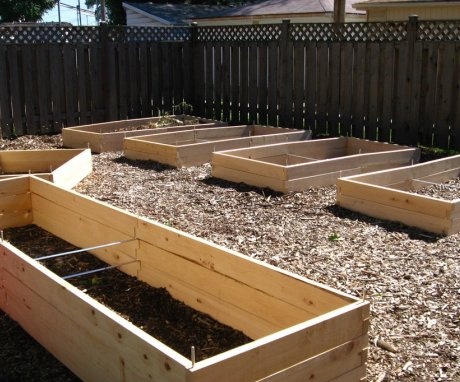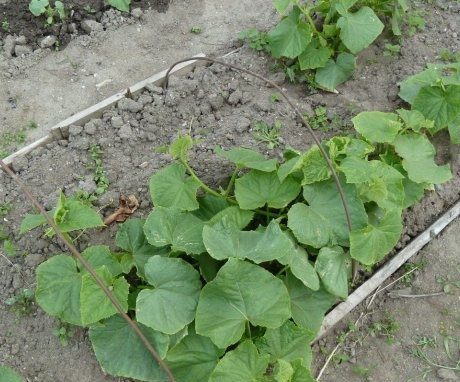Tips for gardeners: how to make a warm garden bed with your own hands
In regions where seeds cannot be planted in open ground in early spring due to cold weather, it is customary to equip warm beds. With their help, a full-fledged crop is grown, despite the unenviable climatic conditions. Tomatoes, cucumbers, greens, radish, zucchini and pumpkin - all this can be grown without problems if you create acceptable conditions for the development of crops.
A novice gardener has a question about how to make a warm bed on a plot from improvised means, without much investment. This will be discussed in the gardener's handbook. Let's consider the rules of organization and find out what is grown on such beds, what are the advantages of a warm "house" for crops.
Content:
- What is a "warm bed", the benefits
- Organization and types of warm beds
- Trench
- Box
- Trench + box
- Crop rotation in a warm bed and planting dates
- Plant care - highlights
What is a "warm bed", the benefits
A warm bed is a special structure that is built either on the surface of the ground or below ground level. The first layer is the installation of drainage from various materials that decompose over time. A layer of plant waste is laid on it, which, when rotted, generate heat. The layers are "covered" with garden soil, and on top with a film.
There are many nuances and features when organizing a warm garden. It is done if the existing soil on the site does not meet the requirements for growing crops, the region has unfavorable climatic conditions, the threat of return frosts until mid-June.
The structure has many advantages:
- An early, bountiful harvest.
- No need to deposit fertilizer in the first years of operation.
- Convenience in the care of crops.
- There is practically no in the garden weeds.
- There is no danger of freezing.
The only drawback of a warm garden bed is the labor costs of organizing. However, the return on the construction is so great that few people think about it. Moreover, all the accumulated plant and organic waste will go to "production", you should not throw away branches, grass, rotten fruits and vegetables. For those whose soil on the site is heavy, clayey, acidic or waterlogged, a warm bed is a real salvation.
Organization and types of warm beds
There are many ways to build a warm bed. Each gardener takes into account the climatic conditions and the type of soil, the method of organization will depend on this. In places where moisture prevails, the soil is boggy, "boxes" are made above ground level. If the garden bed is needed only in order to harvest an early harvest, the climatic conditions are normal, they build a "Trench". In the conditions of Siberia and the Urals, it is customary to make "Trench + box" beds.
Arcs are made over the structures and covering material is pulled over them so that the seedlings can be protected from frost and wind.
A warm bed is not placed anywhere, but in a sunny place. It is desirable that the structure be heated by the sun for 4 hours, the rest of the time the ridge should be supplied with diffused sunlight.An elevated site, if any, is selected. The best option is the east or west side, protected on one side by any building or fence. In the same direction, East -> West, a bed is organized.
Do not make beds in the shade or under trees. It should be an open, bright place, protected from the northerly winds.
Trench
The method involves removing the top layer of soil and filling the trench with plant "filling". The result is a regular bed, but with a warm bottom that warms up the soil.
The trench method is suitable for soils where groundwater does not come close and there is no threat of flooding.
The organization chart boils down to the following stages:
- Remove the topsoil. Depth 40-50 cm in normal climatic conditions and up to 1 m in cold regions. We do not throw away the removed earth. The width of the trench is up to 50 cm, it can be wider if it is convenient for the gardener when caring for the plants.
- At the bottom we lay a fine-mesh metal mesh, on it branches, rotten boards, cardboard, paper - large debris that decomposes. This layer plays the role of drainage, the height is up to 20 cm. The mesh is needed so that mice do not enter the garden, moles.
- Sprinkle the layer with earth. Height 2-3 cm.
- We lay a layer of plant waste - grass, weeds, rotten vegetables, fruits, food waste. Height up to 15 cm.
- We sprinkle the layer with earth - 5-10 cm.
- We lay a layer of semi-matured humus up to 10 cm high. If there is no humus or manure, we spread a layer of plant waste.
- On top of the "pie" we pour ordinary garden soil up to 30 cm high. We level everything, pour it with warm water and cover with a film.
They begin to make a warm bed in the fall. So all layers will have time to lie down and perepryat. The bed is closed with a film in the spring, as soon as the snow has melted. The height of the layers is relative and depends on the size of the dug trench. All layers can be mixed with preparations specially designed to stimulate the decay process, for example, "Baikal M1". They are applied only to a moistened garden bed.
Box
This method of organizing the beds is intended for regions with a humid climate, where there are frequent rains, the soil is swampy and there is a constant threat of frost, large temperature fluctuations.
The construction scheme is as follows:
- The first layer is laid on the allotted place for the garden bed - drainage from branches, cardboard, rotten boards, bars. Height up to 20 cm.
- Vegetable waste is laid on it. Height up to 15 cm.
- The layer is covered with earth.
- Then, humus up to 10 cm high is laid, or again plant waste, if there is no manure.
- A layer of earth up to 50 cm high is poured on top.
- The "cake" is covered with a foil.
The filling of a warm bed is always the same, regardless of the way it is organized. Optionally, drugs are added to the bed to stimulate decay. The structure is fenced with wooden planks or beams. You can use slate. The box is very convenient to process in the future, you do not need to constantly bend low while weeding.
Trench + box
The combined method is suitable for all soils and climates. It combines all the advantages of the two previous methods. The way of organizing is as follows:
- The top layer of soil up to 30 cm high is removed. The resulting trench is lined with boards on the sides and brought up so that a box is formed above the ground level - up to 30-50 cm.
- Layers are laid according to the same scheme - drainage, plant waste, humus, earth with sprinkling of each layer with soil.
- The bed is moistened and, if desired, drugs are added to stimulate decay.
- The structure is covered with foil.
Gardeners often make several warm beds for different crop families. So there will always be a healthy and, most importantly, an early harvest on the table. Before you start sowing seeds in a warm "house", you should take into account the rules for using the structure.
Crop rotation in a warm bed and planting dates
The ridge has been working for the harvest for 4 years.After it is exhausted, it is scattered around the garden and a new, fresh one is made. During this period, the rules are observed on the insulated area crop rotation:
- In the first year, agronomists recommend planting crops of the Pumpkin family.
- In the second year - cucumbers, pumpkin, peppers, cabbage, tomato, eggplant.
- In the third year - carrot, beet, potato, onion, radish.
- In the fourth year - crops of the legume family.
If in the last year you want to grow tomatoes, cucumbers again, you will have to make mineral and organic fertilizers, as the soil is already depleted.
Observing the rules of crop rotation, the harvest will be plentiful, the fruits and roots are healthy, large.
Seeds or seedlings are planted in early April for the southern regions, in mid-April under the film in the northern regions. In May, the first sprouts appear on a warm garden bed when planting crops with seeds.
Plant care - highlights
Considering the fact that a warm bed is constantly "burning", it needs to be watered much more often than an ordinary earthen ridge. Watch the humidity level, this is an important point, otherwise root system plants can burn out. In the first months of operation, monitor the temperature regime in the garden bed, especially if it is under a film cover. Do not overheat.
Open the ridge for ventilation for several hours, but so that there are no large differences inside the structure. The best shelter option is a non-woven material, for example, lutrasil. It allows air and moisture to pass through, but protects from frost or scorching sunlight.
It will be necessary to weed crops very rarely, since weeds hardly grow on a warm ridge.
This is explained by the "fenced off" of the site from the ground. That is, it is difficult for the grass to "migrate" to the height of the building. The main rule of care is watering. Everything is very simple.
A warm bed is a guarantee of an early, bountiful harvest. With its help, crops are successfully grown regardless of the type of soil or climatic conditions. Each site should have 1-2 warm beds. After all, this is a kind of guarantee of obtaining a harvest even under unfavorable growing conditions.
More information can be found in the video:



